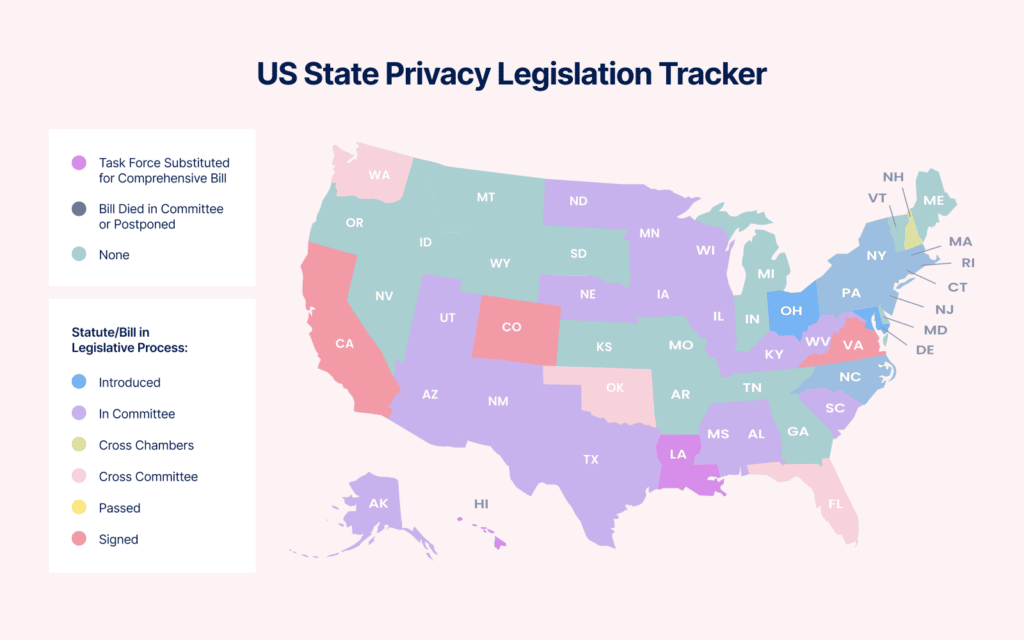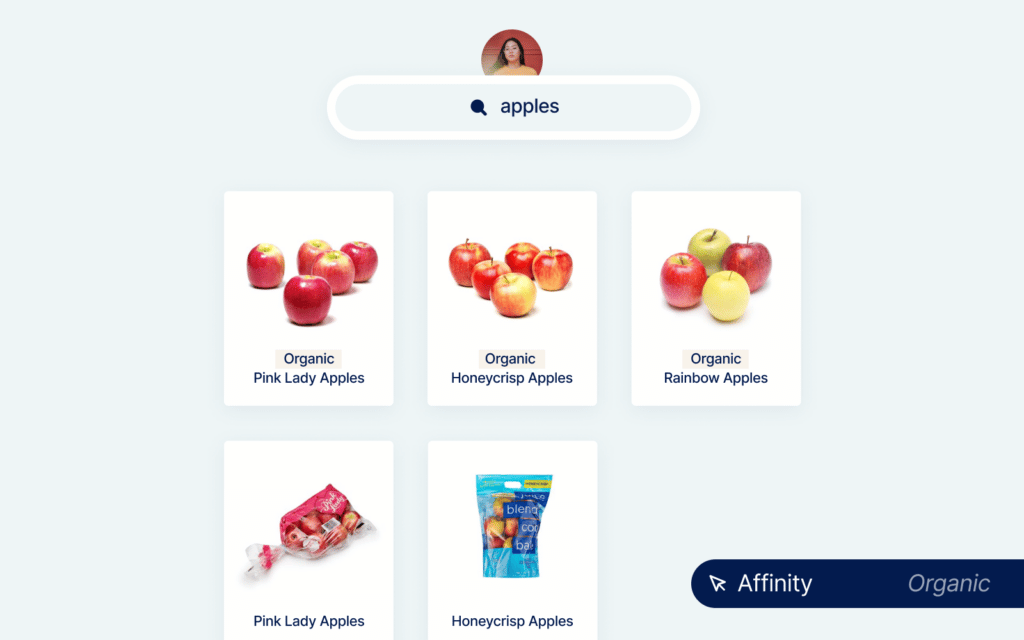Online shoppers expect more personalization than ever before. 91% of ecommerce customers expect relevant, personalized experiences and recommendations when they visit online retailers, and 48% will immediately leave due to poor product curation.
But these expectations aren’t always easy to meet in an era of increasing privacy concerns. As customer data is becoming more difficult to collect, how can companies provide personalized experiences to keep up with demand?
To adapt, many leading ecommerce companies are turning to first-party data collected directly from customers.
There are many reasons why first-party data is a better alternative for enterprise ecommerce companies. But first, let’s take a look at how we got here, and why the types of data businesses collect matter.
Why Data Privacy and Security Matter Now
The surge in ecommerce adoption since 2020 has galvanized lawmakers across the world to put more data privacy and security regulations in place. According to Gartner, 65% of the global population will be protected by at least one modern data privacy law by 2023, up from just 10% in 2020. These laws are making it increasingly difficult to collect personal information for promotional purposes, often requiring explicit permission from each website visitor.
2022 is shaping up to be a watershed moment for data privacy, a culmination of the gaining momentum of the past decade. After the EU enacted its General Data Protection Regulation (GDPR) in 2018, several US states have adopted their own versions of consumer privacy laws. Two separate federal privacy bills were introduced into Congress in 2021, though neither one has yet made it through committee.

Private companies are beginning to take note of consumers’ growing concern for their data. In the past year, Apple and Google both announced enhanced privacy measures to give users more control of how their sensitive data is being used.
All of this has significant implications for online retailers. Each transaction isn’t just an exchange of money for goods or services; it’s an exchange of sensitive information. While customers want personalized experiences, they’re more likely to balk when they learn that companies are targeting them based on their behaviors elsewhere.
It feels creepy, and that’s because it is.
From 3rd Party Cookies to 1st Party Data
One of the most recent major advances in data privacy is the beginning of the end for third-party cookies. Cookies are small packets of code that a web server installs on a user’s hard drive when they visit a website. This allows the website to recognize that user (anonymously) when they return to the website. The “third-party” element comes in when the website shares that recognized user behavior to ad publishers like Google Adsense and Facebook. This allows advertisers to target customers based on what the cookies have tracked, often all without users’ knowledge or consent.
Third-party cookies were one of the primary targets of the GDPR and CCPA legislation. Now companies are required to obtain customer permission to use them (hence the ubiquitous popups and consent forms on nearly every site since 2018). But consumer demand was already shifting in that direction to begin with. Google has announced that it will phase out third-party cookies on Chrome by 2022, following in the earlier footsteps of Firefox and Safari.
What does this mean for retail merchandising and marketing strategy? It means that the data on which we build our personalization efforts is going to have to change.
Enter first-party data.
Benefits of First-Party Data
Data collected directly from customers doesn’t just protect data privacy. It offers other significant benefits as well:
- Accuracy and Quality. First-party data comes from your actual customers instead of abstract data points defined by a third-party advertising platform. It’s simply the best data you can get.
- Low cost. Collecting your own data becomes a lot more economical when you can do it yourself using your own platforms and systems. You own the data outright, so you don’t have to pay another company to use it.
- Improved security and compliance. Being the sole owner of your data means that you can feel confident in knowing that it is collected and stored in compliance with regulations.
- Increased customer loyalty. Customers expect personalization on a website based on the actions they take there. But they don’t like being retargeted on social media after their phone picks up a mention of a brand name. First-party data allows customers to retain a sense of goodwill and trust that the company is using their information responsibly.
How Ecommerce Companies Can Collect First-Party Data
As first-party data is anything that you collect directly from customers, it can come in a variety of forms:
- Contact information from your CRM (as long as that contact information was provided willingly by the customer)
- Customer feedback, surveys, and quizzes
- Email activity like opens and clicks
- Pageview and behavior history from your website, including on-site search queries, purchases, and items added to cart
- Customer activity on your social profiles
According to Nielsen, 85% of companies believe that first-party customer data is critical, but only 19% of retailers feel confident in their tech stacks’ ability to use that data to drive decision making. Data collected directly from customers is objectively more accurate than third-party data, so these numbers indicate the difficulty isn’t so much in accurate first-party data collection, but in properly leveraging it once it exists.
The information that customers provide on your own site is different from what Google or Facebook knows. How can you interpret and apply it so that it can be used to drive merchandising and marketing decisions?
Make the Most of First-Party Clickstream Data
Knowing what customers are doing on your website is only half the battle. Onsite customer behaviors such as search queries, product page views, add-to-cart events, clicks on recommended products, and more (known as “clickstream data”) can provide thousands of opportunities to customize customer experiences each day.
And with the right technology, companies can leverage this data in real-time.
Clickstream data allows companies to interpret each individual customer’s behavior in real-time, but does not require any personally identifiable information to do so. Companies can tap into AI and machine learning to tailor relevant and attractive search results that are customized to each visitor’s preferences as their behaviors demonstrate on the website, creating an instantaneous hyper-personalized ecommerce experience.
As these technologies provide optimized experiences without requiring manual segmentation or rule-building from scratch, they introduce an entirely new way of using data. And in some ways it’s better than what advertising platforms and third-party data providers might offer. These services often segment audiences into demographic cohorts or affinity groups, where there will still be variation within each segment.
With clickstream-backed product discovery, ecommerce brands can create experiences that are truly personalized, down to each individual consumer, in real-time—and without the intrusive data collection practices of the past.
Clickstream Data in Action
What does this look like in practice? Here’s a great example from Constructor:
Imagine you are a grocery retailer taking advantage of the recent growth in online grocery shopping. A customer visits your site and begins shopping for organic milk and organic meat, which they add to their cart. That same customer then types in a search query for “apples.”
Without the word “organic” being in the original query, Constructor’s search algorithm is able to filter the purchase histories of other apple buyers and analyze them against your customer’s organic-heavy purchase history. The result? Organic apples will likely rank above other varieties in this customer’s search results—without any personal information exchanged.

This very specific example from a very specific vertical only scratches the surface for what’s possible with clickstream data. AI enables teams to set sophisticated rules for what products to display and promote in search results and category pages. And it even layers on other parameters such as what business KPI you’d like to target as you display personalized results to customers.
Building Consumer Trust—One Click at a Time
As we look forward into 2022, data privacy and customer experience aren’t just legal or ethical imperatives. They’re the result of market demand.
Companies wishing to thrive in this new era of ecommerce must adapt quickly. In a time when distrust of institutions like government and the media is at an all-time high, forward-thinking brands are seizing the opportunity to fill the trust gap with more personalization, better customer experience, and respect for their customers’ data privacy.
Ultimately, customers vote for businesses with their dollars, and they vote for products with their onsite behavior. Clickstream data and the AI-backed platforms powered by that data make it easier and more cost-effective for companies to do the right thing. And in the end, they’ll be rewarded with more revenue and increased customer loyalty.
Need help making your products more discoverable to your audience and optimizing your ecommerce experience? Constructor’s AI-backed product search and discovery platform can help you personalize your customer experience and optimize the business KPIs that matter most. Request a demo today.

